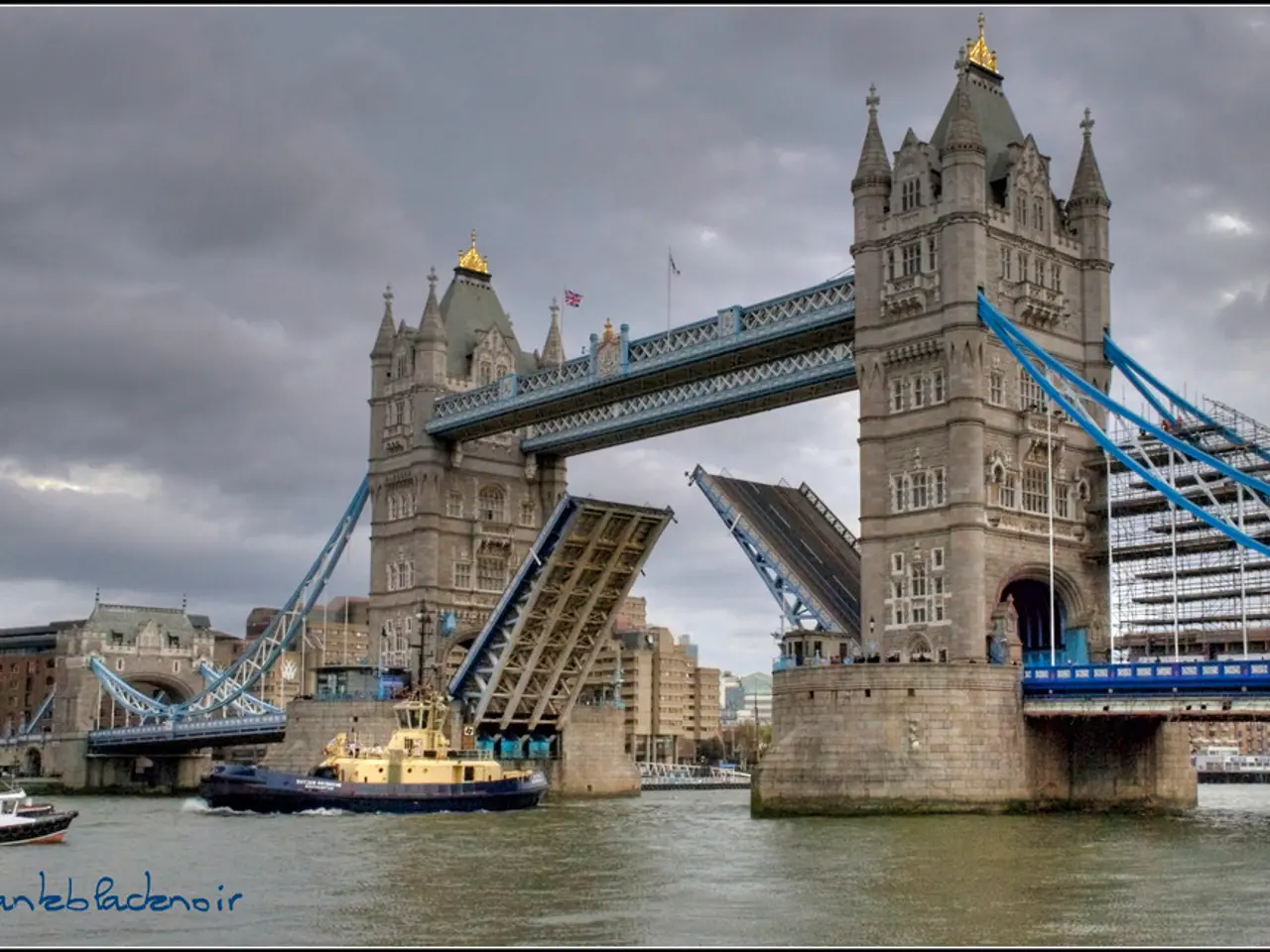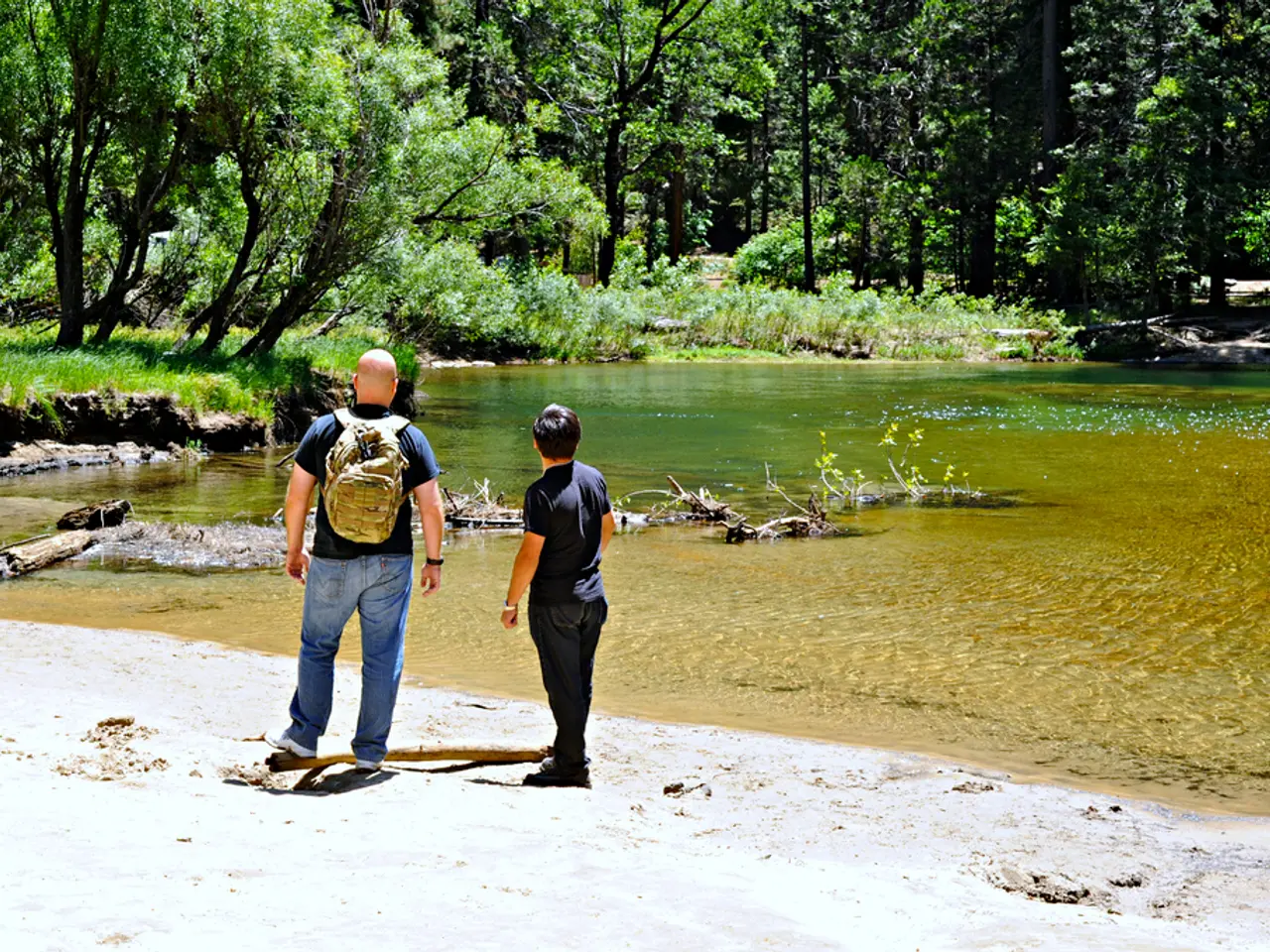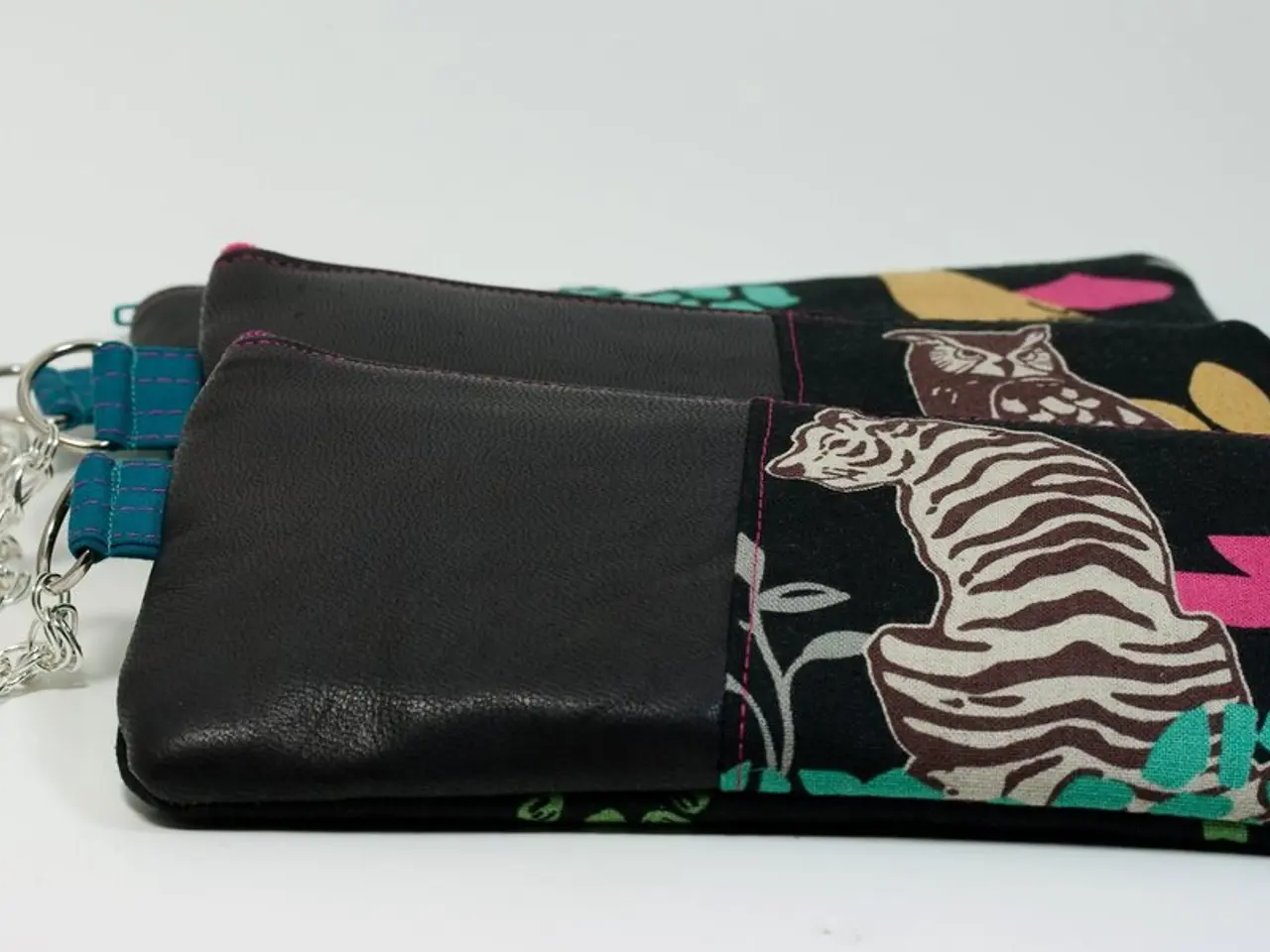Investigation of underwater hydrothermal vents through the use of deep-diving multi-beam sonar data
**Exploring Polymetallic Sulphide Deposits: Advanced Techniques in Deep-Sea Research**
In the vast expanse of the deep sea, the search for precious polymetallic sulphide deposits is a challenging endeavour. However, advanced technologies are transforming this quest, enabling researchers to map the ocean floor with unprecedented precision.
The exploration of these deposits typically involves the use of deep-towed platforms, such as the Deep Tow system, equipped with sidescan sonars and magnetometers. These platforms are designed to be towed at a constant depth behind a survey vessel, collecting high-resolution data in challenging environments [1][2].
Navigating these platforms requires a combination of Global Positioning Systems (GPS) and Inertial Navigation Systems (INS). These systems provide precise positioning and orientation data, ensuring accurate placement of the towed platform and its instruments.
Once the data is collected, it is processed using sophisticated software like MB-System. This software corrects for variations in signal amplitude, filters noise, and mosaics data to create comprehensive maps [1]. Real-time monitoring systems also allow for immediate adjustments to the towed platform's depth and position, ensuring optimal data collection and safety.
In the case of the British Geological Survey (BGR), they use a deep-towed MBES sled named HOMESIDE. This sled is towed at an altitude of 100 m to 120 m to obtain terrain models of a resolution of 2 m [3]. The composition of deposits can vary greatly within a small distance, depending on the temperature and chemistry of fluids, their duration over time, and the environment like tectonic setting or host rocks [4].
The hydrothermal plume can directly be visualized within the MBES water column data collected by HOMESIDE. This data is then further post-processed to reduce mismatches between overlapping bathymetric data, ensuring the accuracy of the final maps [5].
The availability of MBES post-processing tools that provide possibilities for data-based navigation adjustment is crucial for fulfilling the high data requirements for an underwater platform like HOMESIDE. The software MB-System, developed by the Lamount-Doherty Earth Observatory of Columbia University, is now maintained by the Monterey Bay Aquarium Research Institute (MBARI), University of New Hampshire, and MARUM [6].
Despite advancements in technology, the exploration of hydrothermal sites remains challenging due to their relatively small size and the sulphide deposits being subsurface. Moreover, the general knowledge of hydrothermal sites is limited due to their occurrence in remote deep-sea areas [7].
BGR conducts annual cruises into the contract area located along the Central and South-Eastern Indian Ridge to detect new hydrothermal vent sites [8]. The data collected within this project is unique, as it is rare that such a large amount of data is collected over so many years in such a remote area and with such high requirements for accuracy and resolution [9].
The presentation at the Hydrographic Conference HYDRO 2023 in Genoa, Italy, focused on ocean exploration, specifically the exploration of polymetallic sulphide deposits [10]. As the search for these valuable resources continues, the combination of advanced technologies and deep-sea exploration expertise promises to unlock new discoveries and pave the way for future marine mineral extraction activities.
References: [1] Baker, E. T., et al. (2016). How many vent fields? New estimates on vent field populations on ocean ridges from precise mapping of hydrothermal discharge locations. Geochemistry, Geophysics, Geosystems, 17(12), 4494-4507. [2] http://www.deepseachallenge.net/deep-tow [3] http://www.bgs.ac.uk/ocean-science/hydrothermal-vent-research/homeside.html [4] http://www.bgs.ac.uk/ocean-science/hydrothermal-vent-research/deposits.html [5] http://www.bgs.ac.uk/ocean-science/hydrothermal-vent-research/data-processing.html [6] https://www.mbari.org/mb-system [7] http://www.bgs.ac.uk/ocean-science/hydrothermal-vent-research/exploration.html [8] http://www.bgs.ac.uk/ocean-science/hydrothermal-vent-research/cruises.html [9] http://www.bgs.ac.uk/ocean-science/hydrothermal-vent-research/homeside-data.html [10] http://www.hydro2023.it/
The use of advanced technology, such as deep-towed platforms and MB-System software, plays a significant role in the collection and processing of high-resolution data about polymetallic sulphide deposits, enhancing the precision of deep-sea research in environmental science. As a result, understanding the composition and distribution of these deposits, including their connection to hydrothermal plumes, has become more accessible in the field of deep-sea lifestyle studies.




